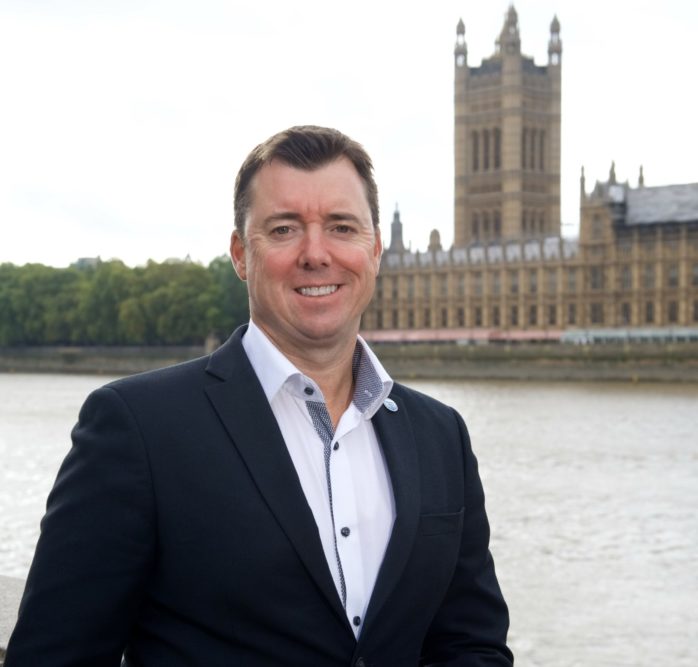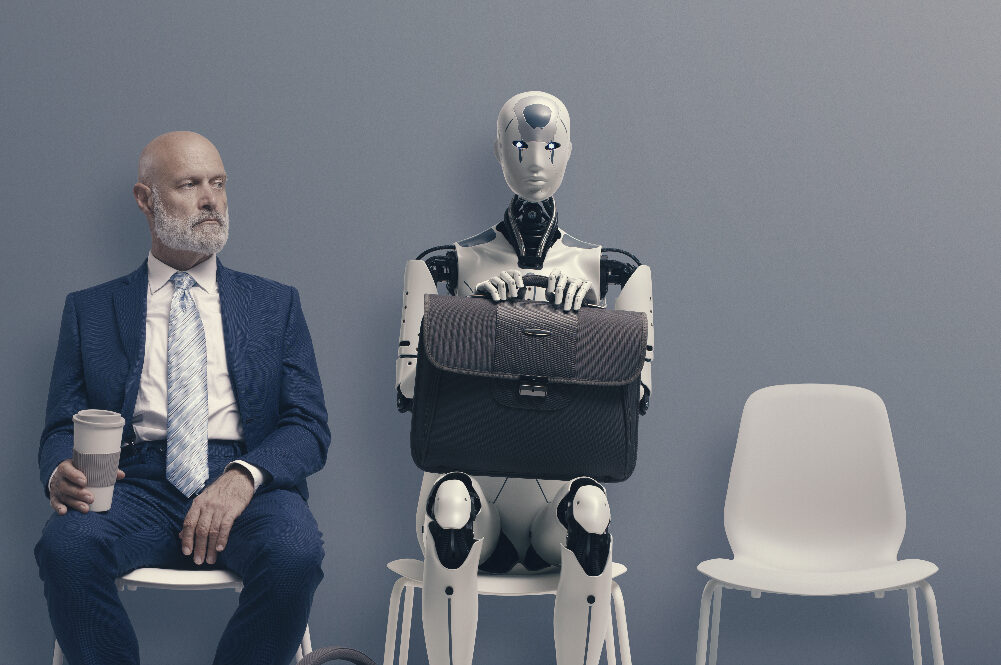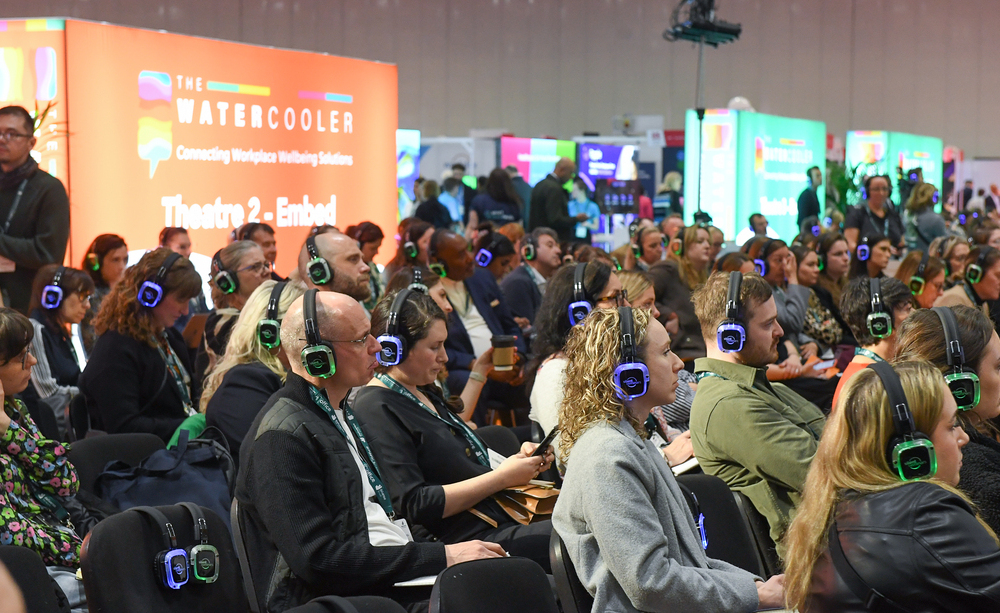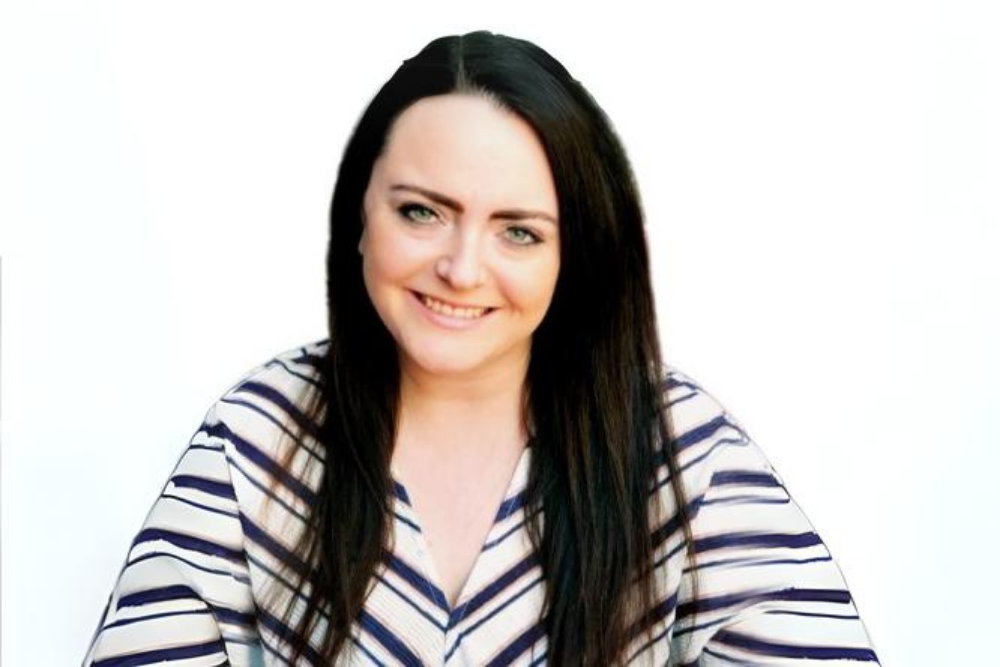Thames Water is an example of a company which has truly achieved culture change in workplace mental health and wellbeing under the leadership of Karl Simons, Chief Health, Safety and Wellbeing Officer.
In this exclusive interview, Karl shared with me the three key components necessary to shift a workforce to a culture of care; the important role that data plays in guiding Thames Water’s ongoing strategy and the innovative ways the progressive utilities company is creating a ripple effect influencing other sectors (like construction and insurance) to invest in wellbeing for their people, now and beyond COVID-19.
Under your leadership, Thames Water has become one of the UK’s most influential companies in when it comes to workplace mental health and wellbeing. What aspects of your overall strategy would you say have had the most impact on improved staff wellbeing?
First, I’d say in the early days the support we had from leadership was critical. Our Chairman and Executive team have been hugely supportive and those in my direct team who have worked tirelessly in the service and support of keeping others safe and well.
We invested in mental health training early on, with a focus on competency upskilling. We needed to make the courses we offered different, as we knew if it was the right course we wouldn’t need to make it mandatory. So, we set up a virtual reality mental health course. Everyone got a real buzz from it, which helped build the credibility.
Still to this day we have a waiting list for our virtual reality mental health training course.
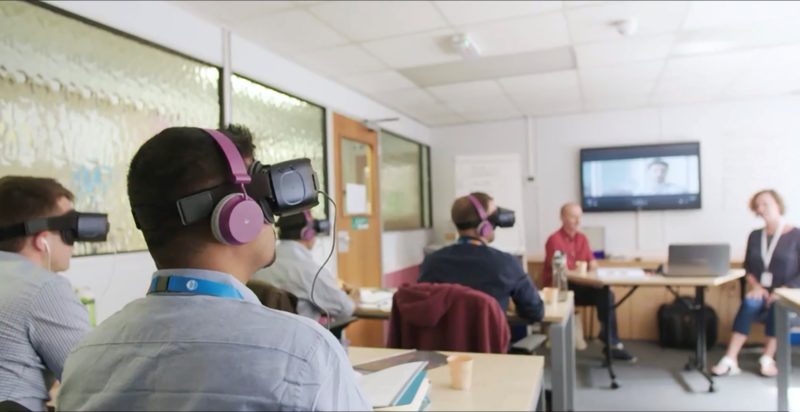
Thames Water’s virtual reality mental health training classroom
We run at least one Mental Health First Aid training per day. And MHFA England has offered an online refresher course (so over COVID-19 for example, we’ve been able to run an adaptation of the course for people working from home). It’s been really successful.
We also have a half day mental health awareness course for everyone. Something really important to emphasise is that you must listen to the trends that are coming across direct from your employees undertaking the mental health courses.
We’ve invested in personal health assessments across the organisation for the past 7 years. We give free physio to people in the company and offer a 12-week challenge for people to get nutritional support. We also have programmes to help people stop smoking. We really look at wellbeing support holistically.
As a result, we’ve seen a 78% reduction in work related illness cases leading to absence which is truly staggering. I’m really pleased about the culture of care we’ve created and the positive impact it’s had.
What role do you think culture plays in sustaining good workplace wellbeing across a workforce over time? How has this played out at Thames Water?
Our culture supports autonomy where people are left to do their work. We don’t want people to think someone is looking over their shoulder. How we behave toward one another is a reflection on our company values; how people approach peers and colleagues.
It also results in people speaking out when something isn’t right; in employees checking in with one another when it comes to physical and mental wellbeing. For example, it empowers managers to be in a position to take the right steps for an employee to feel safe to seek help.
There are three specific pieces of advice I’d offer around culture:
First, I’d say, don’t try to do everything at once. Start sensibly when looking at trying to shift your culture. Look for the creative opportunities to take next steps. Think through what you really want to do around leadership, communication, engagement, and competency upskilling.
Second, you’ve got to listen to your workforce. And you have to genuinely engage with them to be able to do that.
They’ll tell you all the areas where you can actually get the biggest bang for your buck and the biggest difference, and you might not be able to do everything they ask for but the reality is engaging with the workforce is a big part of it.
Third, you have to be relentless. You cannot change culture within an organisation in a very short space of time.
We’ve spent the last seven years creating a culture of care around mental health and wellbeing. And we’ve been relentless year after year, in terms of introducing waves of initiatives consistently that are really impacting the organisation positively.
So when it comes to looking at the cost of supporting mental health and wellbeing on the whole, it should be about looking at the long term investment of this cost now and what is it going to cost you later if you don’t invest now. If you can help benefit people at a small cost, the value is enormous.
And how have you been able to monitor the impact/the ROI of these initiatives over time? What kind of data have you been able to collect and what results have you seen?
Data absolutely drives company health reporting. It drives our strategy.
We’ve run a culture survey the last five years in succession across our six thousand staff. Our health and wellbeing support has consistently scored outstanding. I’m very proud of this.
We use a work/life balance assessment tool which is called a Pascal (a unit of pressure). We use it as a catalyst for conversations when looking at other health factors. People first do a personal health self-assessment then based on the results they have the option to follow up with a professional for further support after.
We also look at social media engagement. For example, on Yammer there were 80k messages posted, and read 1.1 million times by Thames Water staff. This shows the power of social media influence in business and how you can really reach so many people with key messages.
And we have a closed Yammer group for Mental Health First Aiders so that they can be a voice driving our strategy around mental health support.
I feel strongly that leaders have to listen to the silent majority, not solely the vocal minority, so you’re really harvesting everyone’s feedback.
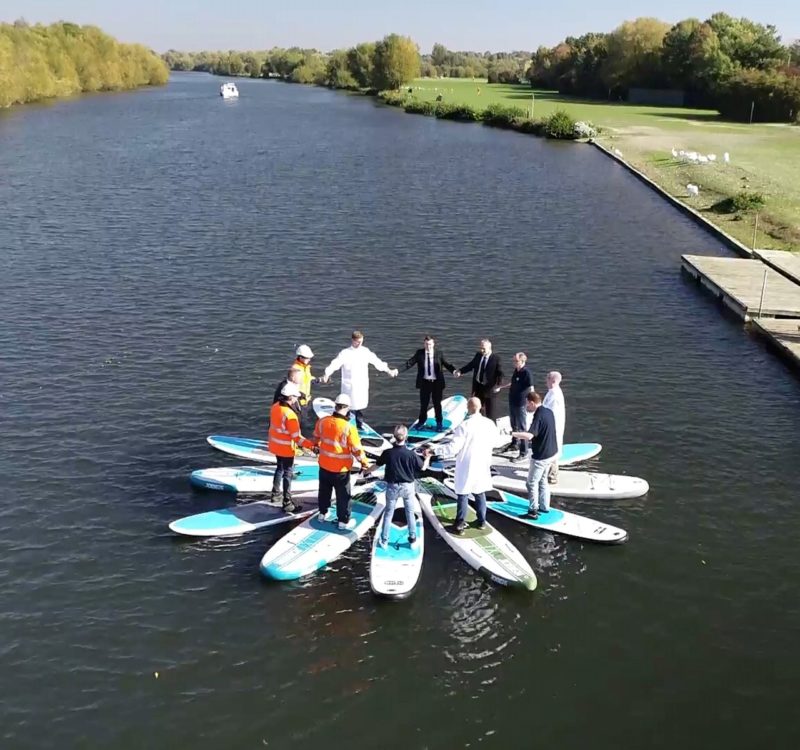
12 Thames Water male staff raising awareness for mental health on national suicide awareness day, to signify that 12 men take their lives every day in the UK
For a water company during the height of the COVID-19 pandemic, I can imagine business had to continue as usual with a large percentage of your workforce still on site working. How has Thames Water approached supporting staff mental health and wellbeing through these incredibly stressful times?
As a critical national infrastructure business, we were told by the government at the start of COVID-19 not to get in a position of emergency with the maintenance of our assets, in terms of being able to provide water to the public. So, we had a pandemic disaster plan in place already, including comms and engagement around wellbeing support for staff. It was designed to handle a worst-case scenario and considered the supply chain as partners in the strategy.
We already had thousands of masks and stock of hand sanitizer on hand, for example. We had to look at how we’d be able to undertake water quality testing in homes when the public might be feeling nervous about it.
We had an internal staff coronavirus helpline and occupational health advice link in place. People working in the field wanted to know who was clinically vulnerable, who should be physically coming to work or not, so we were prepared to respond quickly.
Although we have been well prepared, it wasn’t all clear cut. We’ve learned a lot and have been able to improve the strategy. We’re really proud of how the teams and the supply chains have responded. Last week we had an audit by the Health and Safety Executive around our response to the peak of the COVID-19 crisis, which included speaking to people on site. It was hugely successful in all parts.
What are some examples of ways you have innovated as a company to support staff wellbeing during the health pandemic?
One example is during COVID we provided everyone working at home with laptop risers. The value in investing in this small cost of around £40 per laptop riser is immense. We also sent out 900 adjustable chairs to the homes of our staff.
And another example is we have recently introduced a virtual seating plan. With our ability to remain personally connected to our team being a challenge, many of us have been reliant on the use of virtual meetings. The one thing I’ve missed is those chance encounters in the office or at site where I would end up sitting next to a team member and having a brief conversation.
So, we’ve introduced a randomised seating plan for my 50 team members. The idea being whoever they are sat next to they take some time out to have a virtual conversation with them. It’s a virtual way to interact with people on a daily basis.
Or for example, in the next two weeks we’ve said everybody’s to have a virtual cup of coffee and a conversation with the two people who sat next to you. And it’s a wonderful way of being able to also connect different people in the team and encourage them to still have the social experience of work whilst working from home.
I know that yourself as a leader, and Thames Water as a company, have been big advocates for collaboration within your sector and beyond. What can you tell me about the specific ways you’ve been able to help influence the utilities sector—and other sectors, to make this a priority agenda?
We worked closely with Paul Farmer, Mind’s CEO and Lord Dennis Stevenson in 2017 when they were researching the Thriving at Work report commissioned by Prime Minister, Theresa May. We presented what we had done in Thames Water, and then sat in on a number of workshops to help the conversation, sharing our work.
Since then, we’ve been trying to bring together clients and major contractors to give a picture across the whole of the UK national water sector. We created a survey which allows you to vet and benchmark against all the organisations working across the high-risk sectors based on the Thriving at Work Standards. Our Thames Water clinical team provides the support in undertaking the assessments.
We started with tier one companies. 18 water sector companies took part and then 100 after from across the highways construction and infrastructure sector. Now we’re working with the Insurance and Maritime sectors who are looking to follow the same benchmarking tool.
I don’t think it will stop there, I think it’s a wonderful way for companies to be able to say yes–we are compliant with the Standards.
I’ve presented on Thames Water’s health and wellbeing strategy to over 50 organisations. It’s been very humbling to have leaders from the likes of Richard Branson of Virgin, the UK Space Agency, members of Parliament and the House of Lords, asking me to come and share with them what we’re doing.
My message to companies is always the same: no matter how big a company or how small, don’t be afraid to reach out and ask organisations, or individuals, to come and present to your team. It sparks a different way of thinking. I always go for the business leaders that are doing something; that have something fresh and innovative to share.
Share your best practice. Don’t keep it to yourself in terms of the subject matter. I say to my team we should be sharing everything we do. Get out there for others to learn because we are ultimately protecting people. We’ve constantly been creative and intensely focused on this agenda for seven years straight. There’s a lot of valuable learning others can benefit from.
And is there a wider social benefit you’d say this collaborative approach can have? And what would that be?
The Thriving at Work report was really groundbreaking in the UK. And there are now a lot of organisations working towards meeting the core and enhanced standards set out in that report. Before people were doing things but there was no tangible way of being able to prove that. Now they can say, here, this is how we’re compliant.
So, this is a way of us as a client and our major contractors together as a group of companies working together, to have influence across an entire industry. I think there’s so much benefit to companies learning from one another.
There is a huge social benefit to doing this. The Royals and athletes are speaking out now, alongside industry. But government needs to continue to take this seriously.
You’re considered one of the most influential UK leaders in this space, having invested a lot of personal and professional time into having an impact. What can you tell me about your investment in this agenda?
I’ve worked in a variety of industries and sectors. I’ve seen the effects of negative mental stressors and the effect of mental illness within the workplace.
Everybody gets out of bed and goes to work to do a good job and sometimes there are challenges; there are the ups and downs of life.
I spent the early part of my career in her Majesty’s forces as a soldier. I saw first-hand people doing extraordinary things in very stressful situations. I served in a number of conflicts, but it was afterwards that psychological stressors, or what we know nowadays as post-traumatic stress disorder, would come into effect. Years ago, there was a lot of stigma around that.
Societies have a lot more tolerance for that now, there’s a lot more understanding than back then. I saw first-hand the impact of that on people I cared about. After that experience, there’s a big part of me that says if I can make a small difference in the lives of people who are in the workplace that are really struggling, then that’s a really worthwhile thing for me to do.
Finally, what advice can you offer to other leaders on making it through the next phase of supporting staff through COVID-19?
Look at your future ways of working and what can change for the positive in your organisations.
For example, coronavirus has made it socially acceptable for us to be dialing into meetings, and not be judged. It’s helped drop a lot in the stigma about not being around the table in the office with your boss.
It’s also important to think about the physical perspective. So, I’m not sat in the car every workday now. As much as I got used to it, I now know I don’t need to go to the office all the time. It’s an hour drive. So suddenly I’m not just saving economically on petrol and carbon emissions but I’m saving time in my day and saving my back by not being sat in the car so much.
When you think about people with physical or mental disabilities, you know it’s easier for many of them working from home. This has been a blessing because usually the home environment is the safest and the most well set up and structured place they’ve got. They have to make a lot of sacrifices to be in the office. Even more employers should be looking to make reasonable adjustments in their workplace.
I always say, it’s not the physical or psychological issue that prevents a person thriving in work – it’s the environment which needs to accommodate them. So, companies can deal with a lot of good around thinking this way.
Then the other side of that is, you’ve also got an increased amount of domestic abuse at the minute with people working at home and where people have been isolated. We’ve seen domestic violence cases escalate.
So, we need to pay attention as employers if somebody is asking to come back into work, that the reason why may not just be because they’re bored. It may be that they’re actually giving a signal that says they’re unhappy, unsafe or there’s a real challenge for them at home.
We always make sure we take seriously any such request. You’ve really got to listen to your employees as to the reasons why. And then the benefits of having a clinical team is they can ask those questions that people feel more comfortable at a professional medical level answering, with a sense of safety and confidentiality.
We have to look at some of the positives of what’s happening as a result of this. So, the message for employers is to really take stock of what’s best for staff in terms of wellbeing on the whole. Think about what we’ve learned through this time about practices that aren’t necessarily so practical for everyone, that we’ve just been attached to for all this time as we just haven’t tried anything else.
Karl Simons also contributed to our #COVID-19 virtual roundtable which, with a stellar group of wellbeing leaders, explored how pressures and priorities are evolving and the role that data can play in developing and evolving wellbeing programmes. You can read more about this, here.
About the author

Heather Kelly is the founder of Aura Wellbeing, a consultancy providing workplace wellness strategy, coaching and training services to employers. She’s also Content Director for Make a Difference Summit US and Online Editor for Make a Difference News. Heather led the development and operation of the Workplace Wellbeing Index, during her time working for the UK’s largest mental health charity, Mind. In her earlier career she worked as a photographer, a journalist and a senior manager in the insurance industry. She’s passionate about inspiring more empathy and awareness in workplaces toward normalising mental health and in her spare time Heather teaches photography to teens as part of a charity projects in London and Spain, she’s an avid runner and experimental chef for recipes promoting healthy minds.


